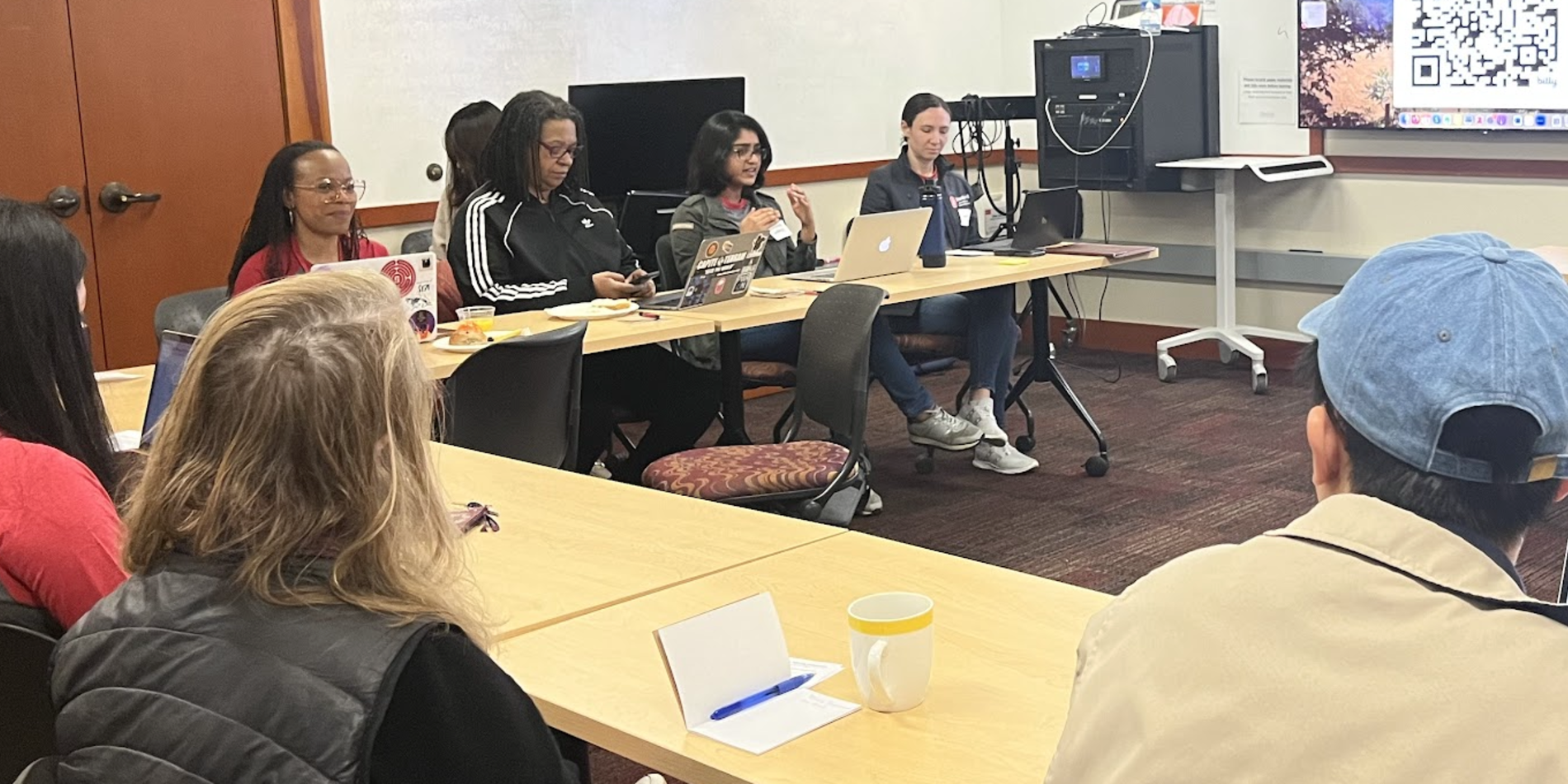Putting Rhetoric in Action: PWR Student Writers for the Stanford Daily
It’s no surprise that a lot of PWR students write for The Stanford Daily. Most Stanford students have taken PWR, and many leave our classes in search of campus venues to address new publics. Recently, PWR Faculty Director Professor Adam Banks and Associate Vice Provost for Undergraduate Education Marvin Diogenes sat down with Daily staff editors to discuss expanding journalism opportunities for our students. Since Autumn 2016, many more PWR students have joined the Daily. Three freshmen -- Laura Mediorreal, Amanda Rizkalla and Stephanie Brito, and sophomore Tashmira Houssain -- agreed to be interviewed for this article.
Stephanie Brito covers the academic beat at the Daily. Before college, she wrote for her high school’s newspaper for 3 years and ended up becoming editor-in-chief senior year. She also wrote for The Miami Herald, contributing two articles a week until NSO. When asked, what inspired her to apply to the Daily, she responds, “In the first few weeks of being at Stanford, I realized that without writing every day, something was missing in my life, writing for the Daily keeps that part of me active.”
Tashmira, Laura, and Amanda found themselves inspired to write for the Daily after completing PWR’s Genre-Modes assignment, which invites students to experiment crafting op-eds, regular columns, video-blogs, and many other forms of public communication. Tashmira first tried out the op-ed genre in lecturer Becky Richardson’s PWR2 course. She describes her op-eds in activist terms “I strive to make an impact with my writing. When I see a certain issue - whether on or off campus - I am driven to write about it. Many of my pieces strive to move the audience to some kind of action, whether in terms of combatting injustice or practicing awareness of issues of identity, race, politics, and the like.”
At Stanford and beyond, Tashmira dreams of being a writer with a public voice. The Daily has offered that starting point for her. Now she is branching out to write for the Huffington Post as well. Passionate about issues of gender equality and education reform, she imagines a future in a writing career centered devoted to advancing social progress.
Laura and Amanda also were inspired by the op-ed when they took the Leland Scholars writing courses in August 2016. Laura’s contributions are multimedia. A photography and video enthusiast, she contributes vlogs to the Daily that she hopes will reach a greater public. “I’d like students around the world to see what we’re experiencing here, what and how we learn and communicate. I’d like people to know it’s possible for them to belong at Stanford and contribute their own ideas too.”
Amanda’s op-ed, “From lower class to literature class” from October 24, 2016, went viral and received over 200,000 hits. The response came as a surprise to her, but she understands she struck a chord with many students who dream of writing careers, and wonder how to explain to their parents that writing also has a “practical, money-earning side” in the world. She’s gone on the write many provocative Daily op-eds, including “Don’t Ask Me What I am” and “Trump and me, a Mexican-Egyptian,” Asked about her inspiration to write for the Daily, Amanda cited both the Genre-Modes assignment and a desire to enter public discussions at Stanford. “The summer before freshman year, I spent a lot of time reading through the Daily to become familiar with the campus I would be joining. Although I learned a lot about Stanford by reading the news articles published on the Daily’s website, I felt like I reached a greater understanding of the people and the culture by pouring over the opinions pieces. However, the more I read, the more I began to notice that as well-written and thought-provoking and beautiful the columns were, no one seemed to be writing about the issues that first-generation and/or low-income students face on campus. Was it because writers were reluctant to publicly label themselves as low-income on a platform as widely read as the Daily? Or was it because there weren’t any first-generation and/or low-income opinions writers, to begin with? When the application for opinions opened in October, I decided to apply even though I had never written for anyone other than myself before. I figured I had to try.”
All four Daily writers agree that the courage to try came from enjoying a collaborative writing environment at Stanford. Laura Mediorreal puts it this way. “All those peer reviews, revisions, and PWR conferences? You not only get used to sharing your writing, you want to share more.”



